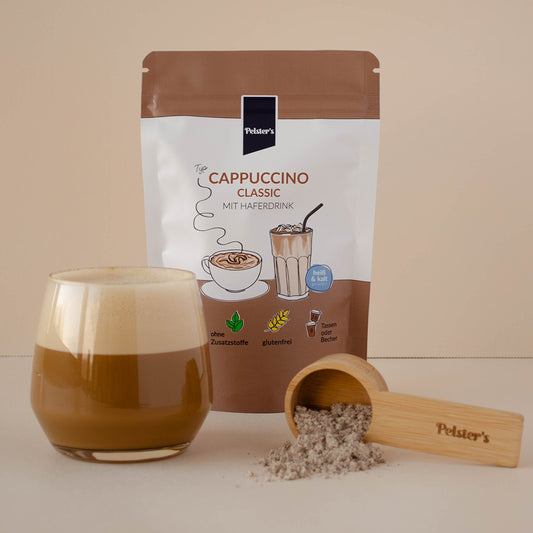Mesoamerica: the cradle of cocoa “The drink of the gods”

Cocoa comes from the Theobroma cacao tree and the first evidence of cocoa consumption dates back to 160 BC or 460 AD, depending on the published source (1, 2).
Cocoa originated in Mesoamerica and is used and consumed by indigenous peoples there as a medicinal product (1). Incas considered the cocoa drink to be the “drink of the gods” (2).
This is how cocoa spread to Europe in the middle of the 15th century. From the 16th to the 20th century, over 100 uses of cocoa or chocolate as a medical treatment were documented. Among other things, it was used to stimulate the nervous system and to improve digestion (1).
In the 19th century, cocoa finally became a luxury item (2). It is therefore a highly complex food source with a wealth of nutritional properties. Today, Ivory Coast is the largest producer of cocoa (1).
However, a distinction should always be made between cocoa as a natural product and the processed product of chocolate, because chocolate is a luxury item. Worldwide chocolate consumption is around 120 g per person (1, 2).
Production and components of cocoa
The  Cocoa is the dried and fully fermented fatty seed of the fruit of the cocoa tree. This produces the cocoa mass, the so-called nibs. They contain fat-free cocoa mass and cocoa butter (1).
Cocoa is the dried and fully fermented fatty seed of the fruit of the cocoa tree. This produces the cocoa mass, the so-called nibs. They contain fat-free cocoa mass and cocoa butter (1).
The cocoa mass determines how dark the chocolate is and also contains many bioactive compounds (1).
The ingredients of cocoa butter are monounsaturated and saturated fatty acids - the fat-free cocoa components contain vitamins, minerals, fiber and polyphenols (secondary plant substances). If the liquid is removed from the cocoa butter, the result is cocoa powder (1).
Cocoa powder retains its polyphenols and other antioxidant substances, with flavonoids being polyphenolic compounds that give it its bitter taste. They also have a heart-protective and antioxidant effect (1).
The importance of cocoa in diabetes – observations among Kuna Indians
Cocoa contains more phenolic antioxidants than most foods. Particularly common phenolic compounds are flavonoids. Their antioxidant effect can directly influence insulin resistance and thus reduce the risk of diabetes mellitus (1).
Furthermore, the polyphenols contained in cocoa have an anti-inflammatory effect. Procyanidins, a subgroup of polyphenols, are therefore responsible for the lower incidence of high blood pressure. Type 2 diabetes mellitus is less common and strokes and cancer are also less common (1).
The above observations were made among the Kuna Indians of the San Blas Islands, who consumed 300 ml cups of cocoa drink three times a day, containing 1880 mg of procyanidin (1).
What makes cocoa so healthy
In addition, cocoa has a positive effect on the vascular endothelium (cell layer in the heart, arteries, capillaries and veins), thereby influencing the acute and chronic upregulation of nitrogen dioxide production. It has a positive effect on the feeling of satiety, cognitive functions of the brain and mood (1).
Consumption of cocoa protects nerves from injury and inflammation, and in tropical countries especially from oxidative damage caused by UV radiation (1).
Dutch study on the importance of cocoa in cardiovascular diseases
A 2006 study from the Netherlands confirmed that cocoa consumption reduces the risk of cardiovascular disease by 50 percent. It also reduces the overall mortality rate. The positive effects occur when more than 2.3 g of cocoa are consumed daily (3). For a chocolate with 70% cocoa, this is 4 g of pure chocolate.
A study published in 2009 concluded that chocolate as a preferred sweet leads to less loneliness and depression, as well as more happy feelings. A positive connection with mental health was thus established (4). Chocolate can also improve a negative mood in the short term (1).
A small downside – the consumption of classic chocolate
However, if cocoa is consumed primarily as chocolate, this is associated with increased weight gain due to the high energy density. Therefore, chocolate should be consumed in moderation and with as much cocoa content as possible. In this case, according to researchers, the positive properties of cocoa outweigh the negative risks of weight gain (1).
The healthier alternative – Pelster´s Kids products with cocoa

At Pelster's, we place great value on minimally processed foods, transparency and sustainability . The products are made exclusively from carefully selected raw materials, without additives, flavors, palm oil or fillers. The natural ingredients are specially selected and are vegan, gluten-free and not tested on animals. Our " organic chocolate drink " contains only two ingredients, namely cocoa and date powder. This gives it the health benefits of cocoa, because we completely avoid additional sugar. Our chocolate spread " organic nut cream with dates and cocoa " also uses only a few ingredients and is sweetened exclusively with dates.
Photos: pixabay
- Sources:
- Katz, D.L., Doughty, K., & Ali, A. (2011). Cocoa and chocolate in human health and disease. Antioxidants & redox signaling, 15(10), 2779–2811.
- Corti, R., Flammer, AJ, Hollenberg, NK, & Lüscher, TF (2009). Cocoa and cardiovascular health. Circulation, 119(10), 1433-1441.
- Buijsse B. Feskens EJ. Kok FJ. Kromhout D. Cocoa intake, blood pressure, and cardiovascular mortality: the Zutphen elderly study. Arch Intern Med. 2006;166:411–417.
- Strandberg TE. Strandberg AY. Pitkala K. Salomaa VV. Tilvis RS. Miettinen TA. Chocolate, well-being and health among elderly men. Your J Clin Nutr. 2008;62:247–253.


























